Our journey from Vienna to Belgrade on EuroVelo 6
In June 2025, we began our cycling journey near Vienna, heading towards Belgrade. The idea for this trip came only about two months earlier, during a day ride from Vienna to Bratislava along EuroVelo 6 – Atlantic-Black Sea.
We planned to reach Budapest in three days – roughly 320 kilometres from our starting point – and booked accommodations for those nights in advance. Although I was a bit nervous, as I’m not an experienced cyclist, favourable wind conditions made the ride easier than expected. From Budapest onwards, we booked our overnight stays one day at a time, planning each next stage the night before.
Stage 1: Vienna → Gabčíkovo
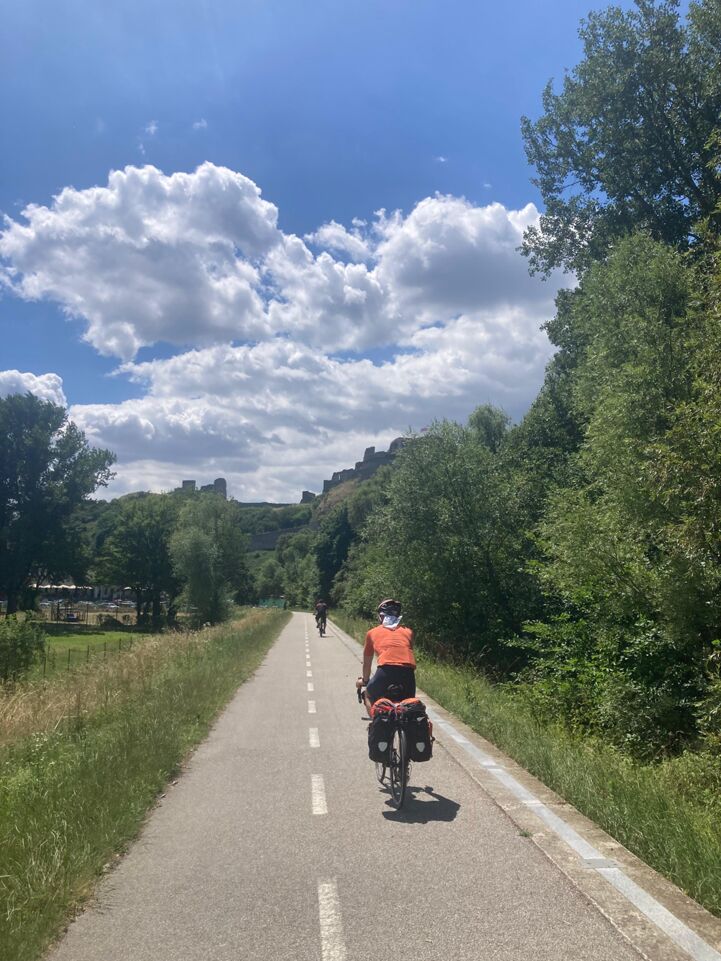
Our journey started just north of Vienna and took us along EuroVelo 6 towards Bratislava.
The cycle path is very well signposted, and there are several route options to Bratislava (we already took this path as mentioned before).
We chose the route via Engelhartstetten and Devinska Nova Ves. It would’ve been about 4 km shorter via Hainburg, but from the border onward, you ride on a beautiful, mostly shaded path all the way to the centre of Bratislava. We made a stop in the Slovakian capital for refreshments and later took a short swim near the X-bionic® Sphere close to Gabčíkovo.
We started with the longest distance of 130 km, because we expected to have more energy on the first day than the following days and, also thanks to good wind conditions, this proved right.
Gabčíkovo itself is unremarkable, but quiet and very cheap. Our accommodation was simple and nice, with safe bike storage in the garden. However, it lacked air conditioning, which was quite a challenge in 30°C during the night inside the room.
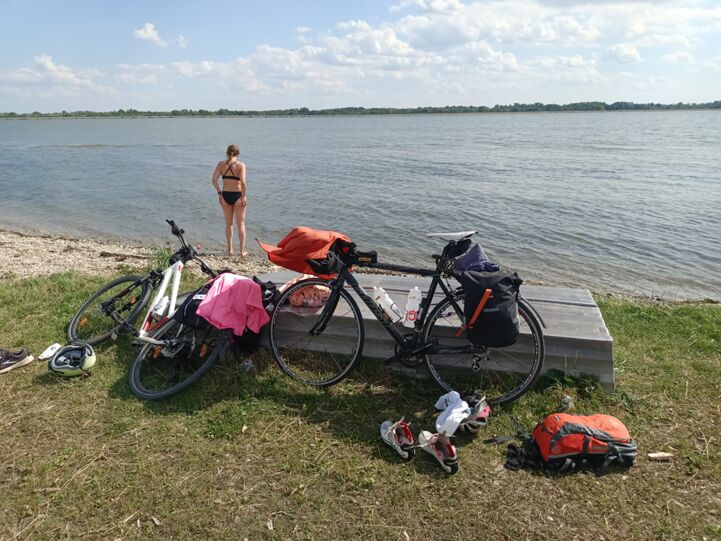
Stage 2: Gabčíkovo → Esztergom
After a short but lovely stretch behind Gabčíkovo, we continued to Komárno. We took a highly recommended break at the café "Kavy Sveta" – with coffee specialities from around the world.
On the way to Esztergom, we enjoyed shaded sections, secluded sandy beaches on the Danube, and a refreshing swim. The signage here was excellent as well. We stayed overnight in a comfortable apartment in Esztergom and dined at a small pizzeria. Esztergom is definitely worth a visit. Although we didn’t make it to the castle, the view alone was beautiful.
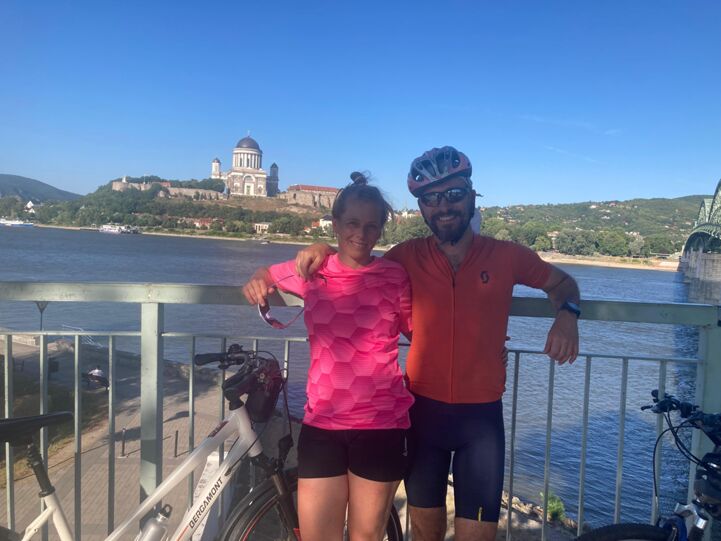
Stage 3: Esztergom → Budapest
This stage was pleasantly shaded – perfect for hot summer days. The route was varied, well-marked, and entirely developed as a cycle path. We took a break in Vác: a rather plain town, but with some nice cafés, including vegan options. In Budapest, we had to ride a stretch on the sidewalk next to a busy road – not ideal, but acceptable. We stayed 2 nights in Budapest, taking our first rest day after 320 km, though due to the heat and our desire to see as much of the city as possible, it wasn’t much of a rest.
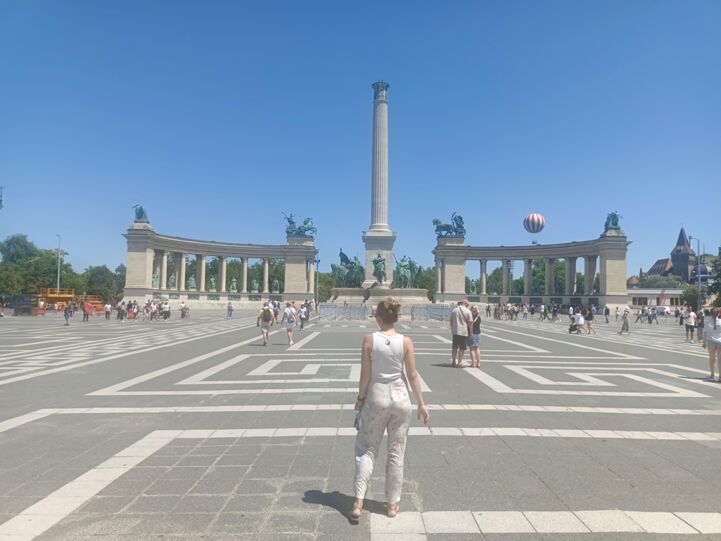
Stage 4: Budapest → Szolt
We had originally considered riding all the way to Harta, but due to the forecasted heat (up to 38°C) and headwind, we decided to stay overnight in Szolt, in an accommodation that had ‘EuroVelo 6’ as part of its own name.
Leaving Budapest was a bit confusing. On the large Danube island (we didn't know Hungary had one!), we rode between two canals and weren't sure which side the EuroVelo was on. After a poor road stretch without shade, the landscape became more pleasant. Still, we might have chosen a better route here.
Later, the path turned into gravel with potholes, and eventually into pure grass. The trail became nearly impassable, and an attempt to take a shortcut through the fields ended up very muddy. In hindsight, it would’ve been better to switch to the road. We met another EuroVelo cyclist in Szolt who had done that and arrived much faster.
Stage 5: Szolt → Mohács
After the exhausting previous stage, we were skeptical about reaching Mohács (~120 km). But we started earlier (around 7 a.m. instead of 9), and the route was much better: paved, low traffic, only short gravel sections. However, signage in this region was a bit patchy.
We took a break in Baja – a charming little town with nice places to eat. Later, we took a ferry across the Danube and reached our accommodation in Mohács without issues.
Stage 6: Mohács → Vukovar
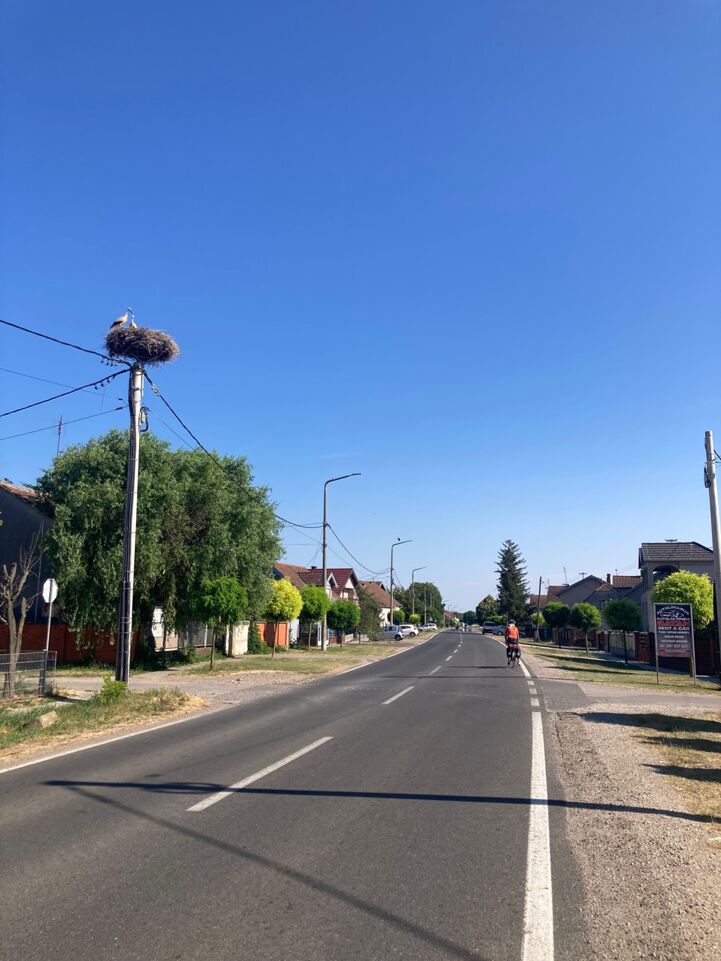
Fairly early on this stage, you cross into Croatia. It starts as a nice cycle path along the Danube, but you soon shift to the road, and near the border you're on a national road for a while, with a lot of traffic including large trucks.
The signage wasn’t great – EuroVelo signs appeared only sporadically. We chose an alternative route, which added some elevation but was far more scenic than the main road.
We stopped in Osijek, where the EuroVelo intersects with the Drava cycle route. Near the castle by the Drava river, there are some cafes and restaurants. You can still sense the presence of the Yugoslav Wars in this area as there are many monuments along the way.
Mostly road cycling here, fewer bike paths, but lots of storks.
Stage 7: Vukovar → Novi Sad
This was meant to be our shortest stage, but due to the heat, it was still tough. The first part led over quiet hill roads, which was a nice variation to the mostly flat roads until then. Around noon, we crossed the border into Serbia at Bačka Palanka.
After a short stretch on an uninviting, busy main road, we finally returned to a nice bike path (along the Danube again) all the way to Novi Sad. Signage was quite good here. The heat was intense, but the landscape was beautiful and the bike path excellent.
Novi Sad has a lot of nice places to eat and is definitely worth a visit.
Stage 8: Novi Sad → Belgrade
After Novi Sad (starting at Petrovaradin Fortress), you ride on a busy road for a while. We decided not to take route B100 to Belgrade, but instead rode via Beska and Novi Karlovci on a quieter road parallel to the A1 motorway. You could also return to the Danube there, which would’ve been a slight detour (but possibly more scenic).
Entering Belgrade via Zemun was very pleasant, with good signage. The bike lanes in Belgrade itself are also excellent.
We arrived in Belgrade one day earlier than planned, giving us two full days plus a half departure day. The city is definitely worth seeing and is also historically fascinating. We took two city tours and visited a museum – and there’s certainly much more to discover.
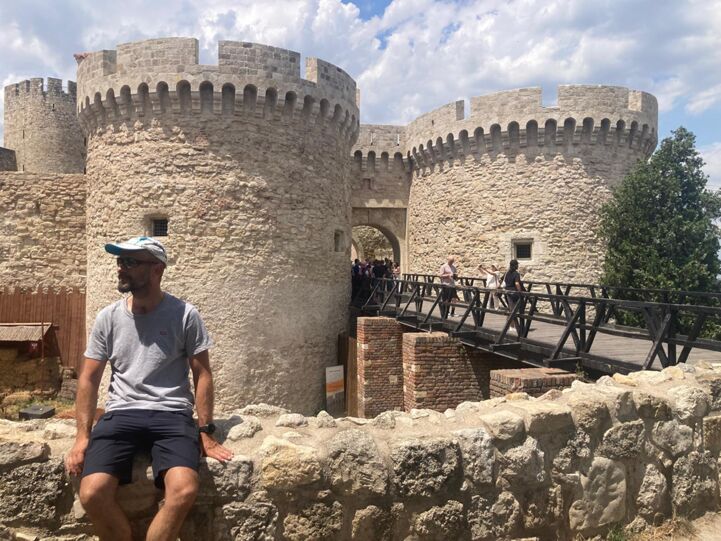
Return Trip – Not only by bike!
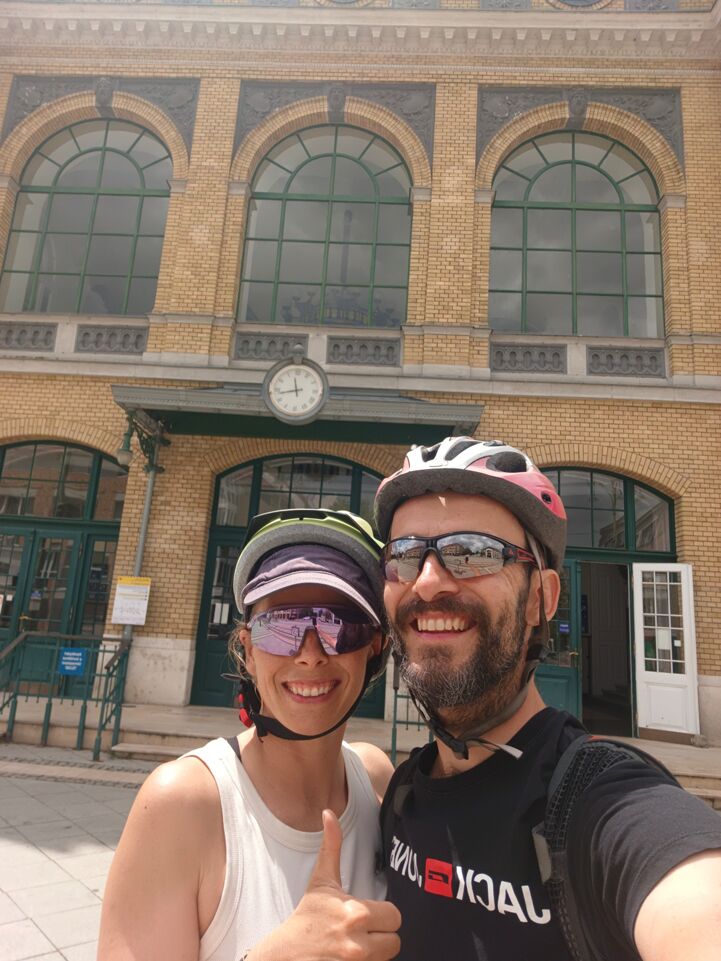
We decided to get back home by train and had booked tickets from Szeged (Hungary) to Vienna. Our way to Szeged was adventurous, to say the least.
Since it’s not possible to carry bicycles on Flixbus and on any train in Serbia, we had to combine cycling and trains.
We cycled back from Temerin, on great paths along the Tisza River for sections that are part of EuroVelo 11 – East Europe Route, spotting again many storks. But then we arrived at the border between Hungary and Serbia outside of opening hours (open only from 7 a.m. to 7 p.m.)...
After a thunderstorm, a tire change, an improvised overnight, a visit to another (closed) border crossing and some unhelpful border police, we managed to cross into Hungary, and about 30 km later we reached Szeged.
After a shower and a short rest in our pre-booked accommodation, we caught our train back to Vienna on time.
Recap
Overall, it was a fantastic journey. We would absolutely recommend the EuroVelo 6 to everyone – including beginners. The route offers a wealth of culturally and historically interesting places, affordable accommodation, and stunning natural scenery. It was our first long-distance cycling trip, and we’re already planning the next ones.
About the author and travellers
Thomas Drescher, 47, works as an Asset Liability Manager at a major Austrian bank and is passionate about a wide variety of sports, particularly endurance disciplines such as running, cycling, and water sports.
Susanne Bednarik, 43, is a high school teacher for sports and IT who loves traveling and is always eager for new adventures.
For both, it was the first multi-day bike packing tour.